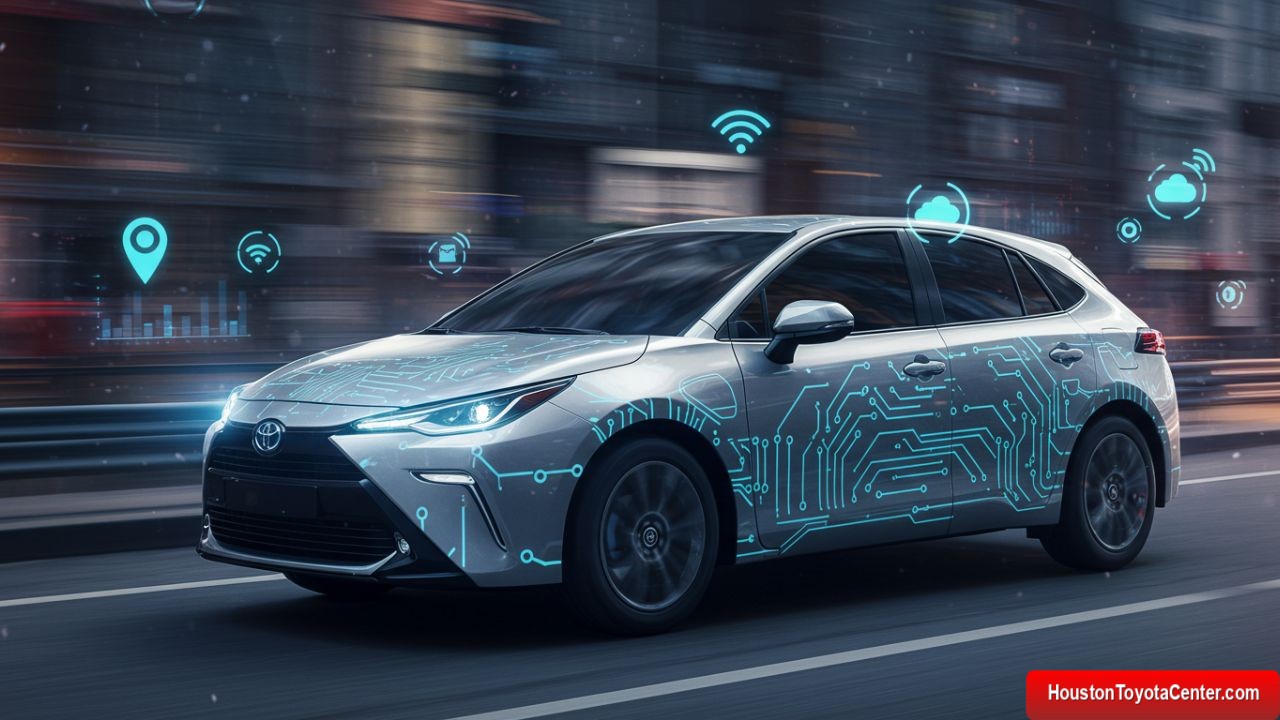The automotive industry is undergoing a seismic shift, driven by advancements in connectivity, artificial intelligence, and IoT (Internet of Things). At the forefront of this revolution is Toyota, a company that has consistently redefined mobility through innovation. Toyota’s connected services—encompassing safety, convenience, navigation, and predictive technologies—are transforming not just vehicles but the entire driving experience.
This article explores how Toyota’s suite of connected features is reshaping modern mobility, enhancing safety, personalizing convenience, and paving the way for autonomous driving. We’ll delve into specific technologies, real-world applications, and the broader implications for drivers, cities, and the environment.
Section 1: Safety Redefined—Proactive Protection on the Road
Toyota’s commitment to safety is epitomized by its Safety Sense suite, now integrated with connected services to create a proactive shield for drivers.
Key Features:
- Pre-Collision System (PCS) with Pedestrian Detection
- Uses cameras and radar to detect potential collisions, alerting drivers and automatically applying brakes if necessary.
- Connected data enhances accuracy by incorporating real-time traffic patterns and road conditions.
- Lane Departure Alert (LDA) with Steering Assist
- Alerts drivers when drifting out of lanes and gently corrects steering via connected sensors.
- Emergency SOS and Roadside Assistance
- Automatically connects drivers to emergency services in critical situations, transmitting GPS location and vehicle diagnostics.
- Adaptive Cruise Control (ACC) with Traffic Jam Assist
- Maintains safe distances in traffic, leveraging cloud-based traffic data to optimize speed adjustments.
Impact : According to Toyota’s 2023 Safety Report, vehicles equipped with connected safety features saw a 40% reduction in collision-related insurance claims.
FREE: Quickly identify and understand problems with your vehicle 🚘
CLICK HERESection 2: Convenience at Your Fingertips—Remote Control and Personalization
Toyota’s connected services extend beyond safety, offering unprecedented convenience through smartphone integration and AI-driven personalization.
Standout Features:
- Remote Start/Climate Control : Pre-cool or heat your vehicle via the Toyota app, ensuring comfort before entering.
- Vehicle Health Reports : Receive real-time diagnostics (e.g., tire pressure, engine status) and maintenance reminders.
- Smart Key & Digital Wallet : Unlock/lock doors, share virtual keys with family, and store payment info for tolls or parking.
Table 1: Toyota Connected Convenience Features by Model
| Model | Remote Climate Control | Digital Key Sharing | Vehicle Health Alerts |
|---|---|---|---|
| Camry (2024) | Yes | Yes | Yes |
| RAV4 (2024) | Yes | Yes (Premium Trim) | Yes |
| Prius Prime | Yes | Yes | Yes + EV Battery Stats |
Section 3: Navigating the Future—Real-Time Intelligence
Toyota’s navigation systems, powered by Toyota Connected Cloud , offer dynamic routing, over-the-air (OTA) updates, and integration with popular apps.
Innovations:
- Real-Time Traffic Updates : Avoid congestion with live traffic data and automatic rerouting.
- Points of Interest (POI) Integration : Search for restaurants, gas stations, or EV charging points via voice command.
- Augmented Reality (AR) Navigation : Projects directional arrows onto live video feeds for complex intersections.
Case Study : A 2023 survey of Toyota drivers in urban areas found that AR navigation reduced wrong turns by 35%.
Section 4: Seamless Integration—Your Car, Your Digital Hub
Toyota vehicles now act as extensions of your digital life, syncing with smartphones, smart homes, and wearables.
Key Integrations:
- Apple CarPlay/Android Auto : Mirror apps like Spotify or Google Maps on the infotainment screen.
- Amazon Alexa/Hey Toyota : Control smart home devices (“Start my AC at home”) or ask for directions via voice.
- Wearable Connectivity : Link fitness trackers to monitor driver fatigue and adjust cabin settings accordingly.
Section 5: Data-Driven Insights—Predictive Maintenance and Beyond
Toyota’s connected cars generate terabytes of data, enabling predictive maintenance and personalized experiences.
Applications:
- Predictive Maintenance : Analyze engine performance to preempt failures (e.g., replacing a battery before it dies).
- Driving Behavior Analytics : Provide feedback on fuel efficiency and safety habits via the Toyota app.
- Fleet Management : For commercial users, track vehicle locations, fuel usage, and driver performance.
Quote : “Toyota’s data analytics have cut our fleet maintenance costs by 25%,” says a logistics manager at a Toyota-partnered delivery company.
Section 6: The Road Ahead—Autonomous Driving and V2X Communication
Toyota is investing heavily in Advanced Drive (Level 3 autonomy) and Vehicle-to-Everything (V2X) technology.
- Autonomous Features : Hands-free highway driving, self-parking, and intersection navigation.
- V2X : Enables cars to communicate with traffic lights, road signs, and other vehicles to prevent accidents.
Future Timeline :
- 2025: Expanded Level 3 autonomy in luxury models.
- 2030: Full V2X integration in all new Toyota vehicles.
Section 7: Challenges and Considerations
Despite its advancements, Toyota faces hurdles:
- Privacy Concerns : Data collection raises questions about user consent and security.
- Cybersecurity : Protecting vehicles from hacking attempts.
- Digital Divide : Ensuring accessibility for non-tech-savvy users.
Toyota addresses these through transparent data policies, end-to-end encryption, and in-car tutorials.
Conclusion: Driving into a Connected Future
Toyota’s connected services are more than features—they’re a paradigm shift in mobility. By prioritizing safety, convenience, and sustainability, Toyota is setting a blueprint for the future of driving. As technology evolves, the line between cars and digital ecosystems will continue to blur, making every journey smarter, safer, and more intuitive.


Leave a Reply